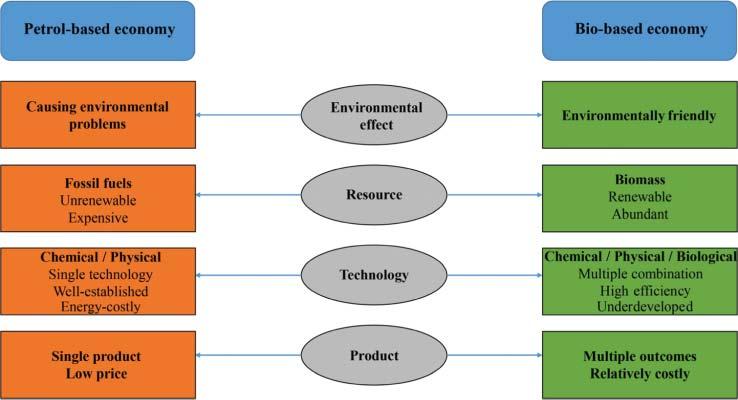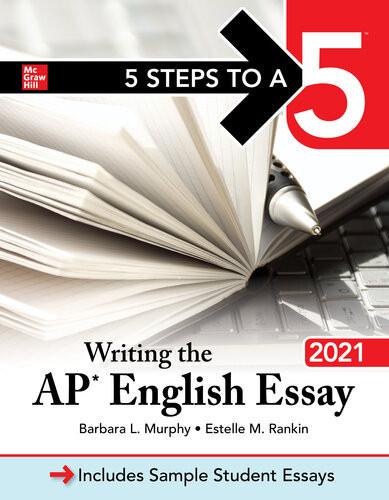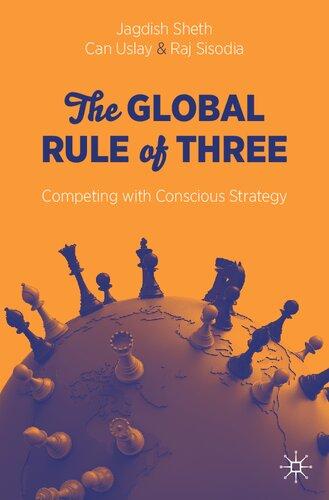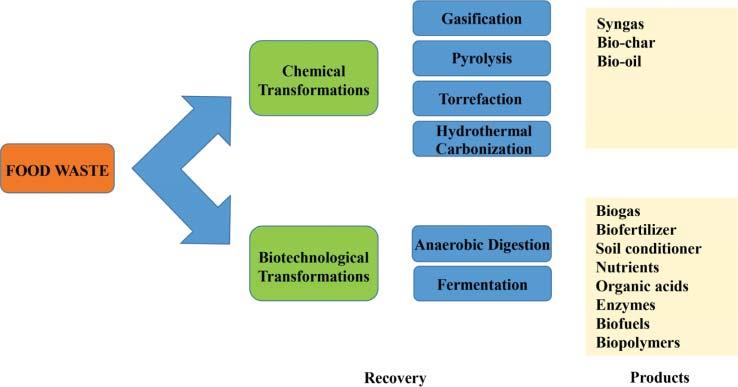https://ebookmass.com/product/waste-valorisation-waste-
Instant digital products (PDF, ePub, MOBI) ready for you
Download now and discover formats that fit your needs...
Waste Biorefinery: Integrating Biorefineries for Waste Valorisation Thallada Bhaskar (Editor)
https://ebookmass.com/product/waste-biorefinery-integratingbiorefineries-for-waste-valorisation-thallada-bhaskar-editor/
ebookmass.com
Sustainable Metal Extraction from Waste Streams Chauhan
https://ebookmass.com/product/sustainable-metal-extraction-from-wastestreams-chauhan/
ebookmass.com
Circular Economy: From Waste Reduction to Value Creation Karen Delchet-Cochet
https://ebookmass.com/product/circular-economy-from-waste-reductionto-value-creation-karen-delchet-cochet/
ebookmass.com
Matemáticas IV - Álgebra lineal 1st Edition Ron Larson Y
Joel Ibarra
https://ebookmass.com/product/matematicas-iv-algebra-lineal-1stedition-ron-larson-y-joel-ibarra/
ebookmass.com
Theoretical Models of Counseling and Psychotherapy – Ebook PDF Version
https://ebookmass.com/product/theoretical-models-of-counseling-andpsychotherapy-ebook-pdf-version/
ebookmass.com
5 Steps to a 5: Writing the AP English Essay 2021 Barbara Murphy
https://ebookmass.com/product/5-steps-to-a-5-writing-the-ap-englishessay-2021-barbara-murphy/
ebookmass.com
Language Disorders from Infancy Through Adolescence 5th Edition Rhea Paul
https://ebookmass.com/product/language-disorders-from-infancy-throughadolescence-5th-edition-rhea-paul/
ebookmass.com
Charlotte: A Christian Romance (The Halversons Book 5) Kimberly Rae Jordan
https://ebookmass.com/product/charlotte-a-christian-romance-thehalversons-book-5-kimberly-rae-jordan/
ebookmass.com
The Global Rule of Three: Competing with Conscious Strategy Jagdish Sheth
https://ebookmass.com/product/the-global-rule-of-three-competing-withconscious-strategy-jagdish-sheth/
ebookmass.com
Handbook of Education Politics and Policy 2nd Edition –Ebook PDF Version
https://ebookmass.com/product/handbook-of-education-politics-andpolicy-2nd-edition-ebook-pdf-version/
ebookmass.com
WasteValorisation
WileySeries in RenewableResources
SeriesEditor:
ChristianV.Stevens,FacultyofBioscienceEngineering,GhentUniversity,Belgium
TitlesintheSeries:
WoodModification:Chemical,ThermalandOtherProcesses
CallumA.S.Hill
Renewables-BasedTechnology:SustainabilityAssessment
JoDewulf,HermanVanLangenhove
Biofuels
WimSoetaert,ErikVandamme
HandbookofNaturalColorants
ThomasBechtold,RitaMussak
SurfactantsfromRenewableResources
MikaelKjellin,IngegärdJohansson
IndustrialApplicationsofNaturalFibres:Structure,PropertiesandTechnicalApplications JörgMüssig
ThermochemicalProcessingofBiomass:ConversionintoFuels,ChemicalsandPower
RobertC.Brown
BiorefineryCo-Products:Phytochemicals,PrimaryMetabolitesandValue-AddedBiomass Processing
ChantalBergeron,DanielleJulieCarrier,ShriRamaswamy
AqueousPretreatmentofPlantBiomassforBiologicalandChemicalConversiontoFuelsand Chemicals
CharlesE.Wyman
Bio-BasedPlastics:MaterialsandApplications
StephanKabasci
IntroductiontoWoodandNaturalFiberComposites
DouglasD.Stokke,QinglinWu,GuangpingHan
CellulosicEnergyCroppingSystems
DouglasL.Karlen
IntroductiontoChemicalsfromBiomass,2ndEdition
JamesH.Clark,FabienDeswarte
LigninandLignansasRenewableRawMaterials:Chemistry,TechnologyandApplications FranciscoG.Calvo-Flores,JoseA.Dobado,JoaquínIsac-García,FranciscoJ.Martin-Martínez
SustainabilityAssessmentofRenewables-BasedProducts:MethodsandCaseStudies
JoDewulf,StevenDeMeester,RodrigoA.F.Alvarenga
CelluloseNanocrystals:Properties,ProductionandApplications WadoodHamad
Fuels,ChemicalsandMaterialsfromtheOceansandAquaticSources FrancescaM.Kerton,NingYan
Bio-BasedSolvents
FrançoisJérôme,RafaelLuque
NanoporousCatalystsforBiomassConversion Feng-ShouXiao,LiangWang
ThermochemicalProcessingofBiomass:ConversionintoFuels,ChemicalsandPower, 2ndEdition
RobertC.Brown
TheChemicalBiologyofPlantBiostimulants
DannyGeelen,LinXu
ChitinandChitosan:PropertiesandApplications LambertusA.M.vandenBroek,CarmenG.Boeriu
BiorefineryofInorganics:RecoveringMineralNutrientsfromBiomassandOrganicWaste ErikMeers,EviMichels,RenéRietra,GerardVelthof
ProcessSystemsEngineeringforBiofuelsDevelopment AdriánBonilla-Petriciolet,GadeP.Rangaiah
WasteValorisation:WasteStreamsinaCircularEconomy CarolSzeKiLin,GuneetKaur,ChongLi,XiaofengYang
ForthcomingTitles:
BiobasedPackaging:Material,EnvironmentalandEconomicAspects MohdSapuanSalit,RushdanAhmadIlyas
High-PerformanceMaterialsfromBio-basedFeedstocks
AndrewJ.Hunt,NontipaSupanchaiyamat,KaewtaJetsrisuparb,JesperT.N.Knijnenburg
WasteValorisation WasteStreamsinaCircular Economy
Editedby
CAROLSZEKILIN
SchoolofEnergyandEnvironment,CityUniversityofHongKong, TatCheeAvenue,KowloonTong,HongKong
GUNEETKAUR
DepartmentofBiology,HongKongBaptistUniversity, KowloonTong,HongKong and DepartmentofCivilEngineering,YorkUniversity,Toronto,Canada
CHONGLI
ShenzhenBranch,GuangdongLaboratoryforLingnanModernAgriculture, GenomeAnalysisLaboratoryoftheMinistryofAgriculture, AgriculturalGenomicsInstituteatShenzhen, ChineseAcademyofAgriculturalSciences,Shenzhen,China
XIAOFENGYANG
SchoolofBiologyandBiologicalEngineering, SouthChinaUniversityofTechnology,Guangzhou,China
Thiseditionfirstpublished2021
©2021JohnWiley&SonsLtd
Allrightsreserved.Nopartofthispublicationmaybereproduced,storedinaretrievalsystem,ortransmitted,inanyformorby anymeans,electronic,mechanical,photocopying,recordingorotherwise,exceptaspermittedbylaw.Adviceonhowtoobtain permissiontoreusematerialfromthistitleisavailableat http://www.wiley.com/go/permissions
TherightofCarolSzeKiLin,GuneetKaur,ChongLi,andXiaofengYangtobeidentifiedastheauthorsoftheeditorialmaterial inthisworkhasbeenassertedinaccordancewithlaw.
RegisteredOffices
JohnWiley&Sons,Inc.,111RiverStreet,Hoboken,NJ07030,USA
JohnWiley&SonsLtd,TheAtrium,SouthernGate,Chichester,WestSussex,PO198SQ,UK
EditorialOffice
TheAtrium,SouthernGate,Chichester,WestSussex,PO198SQ,UK
Fordetailsofourglobaleditorialoffices,customerservices,andmoreinformationaboutWileyproductsvisitusat www.wiley .com
Wileyalsopublishesitsbooksinavarietyofelectronicformatsandbyprint-on-demand.Somecontentthatappearsinstandard printversionsofthisbookmaynotbeavailableinotherformats.
LimitofLiability/DisclaimerofWarranty
Inviewofongoingresearch,equipmentmodifications,changesingovernmentalregulations,andtheconstantflowof informationrelatingtotheuseofexperimentalreagents,equipment,anddevices,thereaderisurgedtoreviewandevaluatethe informationprovidedinthepackageinsertorinstructionsforeachchemical,pieceofequipment,reagent,ordevicefor,among otherthings,anychangesintheinstructionsorindicationofusageandforaddedwarningsandprecautions.Whilethepublisher andauthorshaveusedtheirbesteffortsinpreparingthiswork,theymakenorepresentationsorwarrantieswithrespecttothe accuracyorcompletenessofthecontentsofthisworkandspecificallydisclaimallwarranties,includingwithoutlimitationany impliedwarrantiesofmerchantabilityorfitnessforaparticularpurpose.Nowarrantymaybecreatedorextendedbysales representatives,writtensalesmaterialsorpromotionalstatementsforthiswork.Thefactthatanorganization,website,orproduct isreferredtointhisworkasacitationand/orpotentialsourceoffurtherinformationdoesnotmeanthatthepublisherandauthors endorsetheinformationorservicestheorganization,website,orproductmayprovideorrecommendationsitmaymake.This workissoldwiththeunderstandingthatthepublisherisnotengagedinrenderingprofessionalservices.Theadviceand strategiescontainedhereinmaynotbesuitableforyoursituation.Youshouldconsultwithaspecialistwhereappropriate. Further,readersshouldbeawarethatwebsiteslistedinthisworkmayhavechangedordisappearedbetweenwhenthisworkwas writtenandwhenitisread.Neitherthepublishernorauthorsshallbeliableforanylossofprofitoranyothercommercial damages,includingbutnotlimitedtospecial,incidental,consequential,orotherdamages.
LibraryofCongressCataloging-in-PublicationData
NamesSzeKiLin,Carol,1977-editor.Kaur,Guneet,1985-editor.Li, Chong,1986-editor.Yang,Xiaofeng,1987-editor.
TitleWastevalorisationwastestreamsinacirculareconomyeditedby CarolSzeKiLin,CityUniversityofHongKong,HongKong,GuneetKaur DepartmentofBiology,HongKongBaptistUniversity,KowloonTong,HongKong andDepartmentofCivilEngineering,YorkUniversity,Toronto,Canada,ChongLi,ShenzhenBranch, GuangdongLaboratoryforLingnanModernAgriculture,GenomeAnalysis LaboratoryoftheMinistryofAgriculture,AgriculturalGenomics InstituteatShenzhen,ChineseAcademyofAgriculturalSciences, Shenzhen,China,XiaofengYang,SouthChinaUniversityofTechnology, Guangzhou.
DescriptionFirstedition.Hoboken,NJJohnWiley&Sons,Inc.,2021. SeriesWileyseriesinrenewableresourcesIncludesbibliographical referencesandindex.
IdentifiersLCCN2020016810(print)LCCN2020016811(ebook)ISBN 9781119502708(cloth)ISBN9781119502692(adobepdf)ISBN 9781119502746(epub)
SubjectsLCSHBiomassenergyindustries.Biomassenergy–Economic aspects.
ClassificationLCCHD9502.5.B542W372021(print)LCCHD9502.5.B542 (ebook)DDC338.4766288–dc23
LCrecordavailableathttpslccn.loc.gov2020016810
LCebookrecordavailableathttpslccn.loc.gov2020016811
CoverDesign:Wiley
CoverImages:Frontcoverdesignandimages:X’ianShangyuanNetworkCo.Ltd;Globeimage©IngramPublishing/Alamy StockPhoto
Setin10/12ptTimesLTStdbySPiGlobal,Chennai,India
PrintedandboundbyCPIGroup(UK)Ltd,Croydon,CR04YY 10987654321
ListofContributorsxiii
SeriesPrefacexvii Prefacexix
1OverviewofWasteValorisationConceptsfromaCircularEconomy Perspective1
JinhuaMou,ChongLi,XiaofengYang,GuneetKaurandCarolSzeKiLin
1.1Introduction1
1.2Developmentof(Bio)ChemicalProcessforUtilizationofWasteasa Bioresource4
1.2.1MechanicalPretreatment5
1.2.2PhysicalPretreatment5
1.2.3ChemicalPretreatment5
1.2.4BiologicalPretreatment6
1.3ProcessIntegrationforWaste-BasedBiorefinery6
1.3.1FoodWasteBiorefinery7
1.3.2AgriculturalWasteBiorefinery7
1.3.3IndustrialWasteBiorefinery8
1.3.4WastewaterBiorefinery8
1.4ClosedLoopRecirculationinaBio-basedEconomy8
1.5ConclusionsandFutureTrends9 References10
2WasteasaBioresource13
GayatriSuresh,JosephSebastianandSatinderKaurBrar
2.1Introduction13
2.2WasteStreamsandTheirSuitabilityasFeedstockforValorisation:Is AllWasteaResource?14
2.3(Bio)diversityandVariabilityofWasteFeedstock16
2.3.1Agro-industrialWastes16
2.3.2MunicipalSolidWastes18
2.3.3LivestockWastes19
2.3.4IndustrialWastes21
2.4Drivers,Policies,andMarketsforValue-addedWaste-derived Products23
2.5ConclusionsandFutureTrends25 Acknowledgements26 References26
3TreatmentofWaste33 RavindranBalasubramani,VasanthyMuthunarayanan,KarthikaArumugam, RajivPeriakaruppan,ArchanaSingh,SoonWoongChang,Thamaraiselvi Chandran,GopalShankarSinghandSelvakumarMuniraj
3.1Introduction33
3.2SolidWasteManagement34
3.2.1E-wasteManagement34
3.2.2HazardousWasteManagement35
3.2.3BiomedicalWasteManagement35
3.2.4PlasticWasteManagement35
3.2.5SolidWasteManagementOptions35
3.3GeneralApproachforWasteTreatmentandConversionto Value-addedProducts:Biochemical,Mechanical,and Thermochemical36
3.3.1ConventionalTreatment36
3.3.2Biological/BiochemicalTreatment37
3.3.3ThermalMethods40
3.3.4OpenBurning40
3.3.5MechanicalTreatment40
3.4FactorsInfluencingSelectionofanAppropriateValorisation TechniqueforSpecificWasteTypes42
3.4.1CaseStudyofPaperWasteRecycling42
3.4.2DeinkingProcess42
3.4.3PaperDeinkingResidue43
3.5ConventionalandNovelTechniques:OverallComparisoninTermsof EnergyConsumption,WasteStreamGenerationandCost44
3.5.1Pyrolysis44
3.5.2Gasification44
3.5.3Incineration44
3.6EnergyConsumption,WasteStreamGeneration,andCostsof ConventionalandNovelWasteTreatmentTechnologies45
3.7ConclusionsandFutureTrends45 Acknowledgement46 References46
4ValorisationofAgriculturalWasteResidues51 SrinivasMettu,PobitraHalder,SavankumarPatel,SazalKundu,Kalpit Shah,ShunyuYao,ZubeenHathi,Khai LunOng,SandyaAthukoralalage, NamitaRoyChoudhury,NabaKumarDuttaandCarolSzeKiLin 4.1Introduction51
4.2AgriculturalWasteDefinition,Composition,Variability,and AssociatedPoliciesandRegulations53
4.2.1AgriculturalWastefromFarming55
4.2.2AgriculturalWastesfromLivestock56
4.2.3AgriculturalWasteAvailability57
4.3ConventionalTechniques–AnaerobicDigestion,Pyrolysis, Gasification,andSolventTreatment/Extraction58
4.3.1AnaerobicDigestion58
4.3.2SolventTreatment63
4.3.3Gasification65
4.3.4Pyrolysis67
4.4NovelTechniquesandEnvisionedProductStreams:ANew Perspective71
4.5CaseStudy:YardWasteManagement74
4.5.1BackgroundofYardWasteinHongKong74
4.5.2ConventionalYardWasteReductionandTreatmentStrategy75
4.5.3NovelTechniquesandStrategiesforYardWasteTreatment76
4.6ConclusionsandFutureTrends76 Acknowledgements77 References77
5ValorisationofWoodyBiomass87 MdKhairulIslam,ChengyuDong,Hsien-YiHsu,CarolSzeKiLinand Shao-YuanLeu
5.1GenerationofWoodyBiomass87
5.2GeneralClassificationandPropertiesofWoods88
5.3WoodChemistry89
5.3.1Cellulose89
5.3.2Hemicelluloses90
5.3.3Lignin91
5.3.4Extractives92
5.4ChemicalCompositionAnalysis93
5.4.1StructuralCarbohydratesandLignin93
5.4.2Extractives94
5.5Pretreatment94
5.6SaccharificationandFermentation97
5.7NewFunctionsofWoodResidues100
5.7.1Wood–PlasticCompositeforConstructionPurposes100
5.7.2CelluloseNanomaterials100
5.7.3WoodExtractives102
5.8ConclusionsandFutureTrends102 Acknowledgement102 References103
6RecoveryofNutrientsandTransformationsofMunicipal/Domestic FoodWaste109 DivyaniPanwar,ParmjitS.Panesar,GishaSingla,MeenaKrishaniaand AvinashThakur
6.1Introduction109
6.2CharacteristicsofFoodWasteanditsSupplyChain111
6.2.1CharacteristicsofWasteGeneratedfromFoodIndustries113
6.2.2FoodWasteSupplyChain114
6.3RecoveryofValuableProductsfromAnaerobicDigestionof FoodWaste116
6.3.1Biogas118
6.3.2Digestate119
6.4NovelApproachesandObtainableProducts:Biotechnological ProcessesandChemicalTransformations124
6.4.1ChemicalTransformations125
6.4.2BiotechnologicalApproaches130
6.5CaseStudy:ProductionofMethaneviaAnaerobicDigestionofFood Waste139
6.5.1AnaerobicDigestion140
6.5.2TEAMDigesterforDomesticFoodWasteDigestion143
6.6ConclusionsandFutureTrends144 References145
7BioconversionofProcessingWastefromAgro-FoodIndustriesto Bioethanol:CreatingaSustainableandCircularEconomy161 DeepakKumarandVijaySingh
7.1Introduction161
7.2BioconversionTechnologiesforBioethanolProduction164
7.2.1EthanolProductionfromStarchyFeedstock (First-GenerationBioethanol)164
7.2.2EthanolfromLignocellulosicBiomass(Second-Generation Bioethanol)167
7.3UseofProcessingWastetoProduceEthanol170
7.3.1CitrusPeelWaste(CPW)170
7.3.2PeelResidueWastefromOtherFoodIndustries171
7.3.3WastefromtheBrewingIndustry172
7.3.4OtherProcessingWastes173
7.4UseofProcessingWastetoEnhanceEthanolYields174
7.4.1ImprovingFermentationofDryFractionatedCorn174
7.4.2ProcessingofDDGStoEnhanceEthanolYields177
7.5ConclusionsandFutureTrends178 References179
8ChallengeswithBiomassWasteValorisation183 GuihuaYan,YunchaoFeng,SishiLong,XianhaiZeng,YongSun,XingTang andLuLin
8.1Introduction183
8.2ThePre-PreparationTechnologiesofBiomassWaste184
8.2.1“Cellulose-First”BiorefineryTechnologies185
8.2.2“Lignin-First”BiorefineryTechnologies185
8.2.3“LigninandHemicellulose-First”BiorefineryTechnologies186
8.2.4“CelluloseandHemicellulose-First”Biorefinery Technologies186
8.3HandlingofEmergingBiomassWastesbyNewlyDeveloped Techniques188
8.3.1CatalyticChemistryTechnologies188
8.3.2ThermochemicalConversionTechnologies189
8.3.3BiochemicalTechnologies190
8.3.4IntegrationwithExistingTechnologiesandEconomic Viability190
8.4TransformingBiomassWastetoCellulosebyNewTechniques191
8.4.1CelluloseExtractionorPurificationTechniquesfrom BiomassWaste192
8.4.2CelluloseMicro/NanomerizationTechnologies192
8.5TransformingBiomassWastetoLigninbyNewTechnologies197
8.6ConclusionsandFutureTrends198 Acknowledgements199 References199
9LifecycleApproachesforEvaluatingTextileBiovalorisationProcesses: SustainableDecision-makinginaCircularEconomy203 KarpagamSubramanian,ShauhratS.Chopra,CakinEzgi,XiaotongLiand CarolSzeKiLin
9.1Introduction203
9.2LiteratureReview206
9.2.1CircularEconomyandSustainableDevelopment206
9.2.2TextileIndustry–SustainabilityIssuesandRecycling206 9.3Methods208
9.3.1DescriptionofEnvironmentalAssessment208
9.3.2DescriptionofSocialAssessment209 9.4CaseStudy211
9.4.1RecoveryofPETFiberfromCotton–PolyesterBlended TextileWaste211
9.4.2SystemDescriptionoftheBiorecyclingMethod212
9.4.3LifeCycleInventory214
9.5ResultsandDiscussion215
9.5.1EnvironmentalSustainabilityofBio-basedPETFiber215
9.5.2SocialandEconomicSustainabilityofBio-basedPETFiber217
9.6ConclusionsandFutureTrends218 Acknowledgement219 References219
10CircularWaste-BasedBiorefineryDevelopment223 RaffelDharmaPatria,XiaotongLi,HuaiminWang,ChenyuDu,CarolSzeKi LinandGuneetKaur
10.1Introduction223
10.2TransitioningfromCurrentLineartoStrongerCircularEconomy Models226
10.2.1IntegrationofCircularEconomyandSustainable Development226
10.2.2RequirementsforTransitiontoaCircularEconomy227
10.3CaseStudy1:CircularTextileWaste-basedBiorefineryforProduction ofChemicals,Materials,andFuels229
10.3.1NeedforaCircularTextileWaste-basedBiorefinery229
10.3.2CircularTextileBiorefinery230
10.4CaseStudy2:CircularFoodWaste-basedBiorefineryforProduction ofChemicals,Materials,andFuels233
10.4.1CircularBioconversionofFoodWasteintoPolyethylene Furanoate(PEF)235
10.4.2CircularBioconversionofFoodWasteintoBiosurfactant240
10.5ConclusionsandFutureTrends246 Acknowledgements246 References247
ListofContributors
KarthikaArumugam DepartmentofBiotechnology,KalasalingamUniversity,India
SandyaAthukoralalage ChemicalandEnvironmentalEngineering,RMITUniversity, Australia
RavindranBalasubramani DepartmentofEnvironmentalEnergyandEngineering, KyonggiUniversityYoungtong-Gu,SouthKorea
SatinderKaurBrar INRS-ETE,UniversitéduQuébec,Canada DepartmentofCivilEngineering,LassondeSchoolofEngineering,YorkUniversity, Canada
ThamaraiselviChandran DepartmentofBiotechnology,MotherTeresaWomen’s University,India
SoonWoongChang DepartmentofEnvironmentalEnergyandEngineering,Kyonggi UniversityYoungtong-Gu,SouthKorea
ShauhratS.Chopra SchoolofEnergyandEnvironment,CityUniversityofHong Kong,HongKong
NamitaRoyChoudhury ChemicalandEnvironmentalEngineering,RMITUniversity, Melbourne,Australia
ChengyuDong DepartmentofCivilandEnvironmentalEngineering,HongKongPolytechnicUniversity,HongKong
ChenyuDu SchoolofAppliedSciences,UniversityofHuddersfield,UnitedKingdom
NabaKumarDutta ChemicalandEnvironmentalEngineering,RMITUniversity, Australia
CakinEzgi SchoolofEnergyandEnvironment,CityUniversityofHongKong, HongKong
YunchaoFeng CollegeofEnergy;FujianEngineeringandResearchCenterofClean andHigh-valuedTechnologiesforBiomass;andXiamenKeyLaboratoryofCleanand High-valuedApplicationsofBiomass,XiamenUniversity,PRChina
PobitraHalder ChemicalandEnvironmentalEngineering,RMITUniversity,Australia
ZubeenHathi SchoolofEnergyandEnvironment(SEE),CityUniversityofHongKong, HongKong
Hsien-YiHsu SchoolofEnergyandEnvironment,CityUniversityofHongKong, HongKong
MdKhairulIslam DepartmentofCivilandEnvironmentalEngineering,HongKong PolytechnicUniversity,HongKong
GuneetKaur DepartmentofBiology,HongKongBaptistUniversity,KowloonTong, HongKongandDepartmentofCivilEngineering,YorkUniversity,Canada
MeenaKrishania CenterofInnovativeandAppliedBioprocessing,India
DeepakKumar DepartmentofChemicalEngineering,StateUniversityofNewYork CollegeofEnvironmentalScienceandForestry,USA
SazalKundu ChemicalandEnvironmentalEngineering,RMITUniversity,Australia
Shao-YuanLeu DepartmentofCivilandEnvironmentalEngineering,HongKongPolytechnicUniversity,HongKong
ChongLi ChineseAcademyofAgriculturalSciences,China
XiaotongLi SchoolofEnergyandEnvironment,CityUniversityofHongKong, HongKong
CarolSzeKiLin SchoolofEnergyandEnvironment,CityUniversityofHongKong, HongKong
LuLin CollegeofEnergy;FujianEngineeringandResearchCenterofCleanand High-valuedTechnologiesforBiomass;andXiamenKeyLaboratoryofCleanand High-valuedApplicationsofBiomass,XiamenUniversity,PRChina
SishiLong CollegeofEnergy;FujianEngineeringandResearchCenterofClean andHigh-valuedTechnologiesforBiomass;andXiamenKeyLaboratoryofCleanand High-valuedApplicationsofBiomass,XiamenUniversity,PRChina
SrinivasMettu SonochemistryGroup,SchoolofChemistry,UniversityofMelbourne, Parkville,Australia
ChemicalandEnvironmentalEngineering,RMITUniversity,Australia SchoolofEnergyandEnvironment(SEE),CityUniversityofHongKong,HongKong
JinhuaMou SchoolofEnergyandEnvironment(SEE),CityUniversityofHongKong, HongKong
SelvakumarMuniraj WaterandSolidWasteProcessingLab,DepartmentofEnvironmentalBiotechnology,BharathidasanUniversity,India
VasanthyMuthunarayanan WaterandSolidWasteProcessingLab,Departmentof EnvironmentalBiotechnology,India.
KhaiLunOng SchoolofEnergyandEnvironment(SEE),CityUniversityofHong Kong,HongKong
ParmjitS.Panesar FoodBiotechnologyResearchLaboratory,DepartmentofFood EngineeringandTechnology,SantLongowalInstituteofEngineeringandTechnology, India
DivyaniPanwar FoodBiotechnologyResearchLaboratory,DepartmentofFoodEngineeringandTechnology,SantLongowalInstituteofEngineeringandTechnology,India
SavankumarPatel ChemicalandEnvironmentalEngineering,RMITUniversity, Australia
RaffelDharmaPatria SchoolofEnergyandEnvironment,CityUniversityofHong Kong,HongKong
RajivPeriakaruppan DepartmentofBiotechnology,KarpagamAcademyofHigher Education,India
JosephSebastian INRS-ETE,UniversitéduQuébec,Canada
KalpitShah ChemicalandEnvironmentalEngineering,RMITUniversity,Australia
ArchanaSingh InstituteofEnvironmentandSustainableDevelopment,BanarasHindu University,India
GopalShankarSingh InstituteofEnvironmentandSustainableDevelopment,Banaras HinduUniversity,India
VijaySingh AgriculturalandBiologicalEngineeringDepartment,UniversityofIllinois atUrbana-Champaign,USA
GishaSingla CenterofInnovativeandAppliedBioprocessing,India
KarpagamSubramanian SchoolofEnergyandEnvironment,CityUniversityofHong Kong,HongKong
YongSun CollegeofEnergy;FujianEngineeringandResearchCenterofClean andHigh-valuedTechnologiesforBiomass;andXiamenKeyLaboratoryofCleanand High-valuedApplicationsofBiomass,XiamenUniversity,PRChina
GayatriSuresh INRS-ETE,UniversitéduQuébec,Canada
XingTang CollegeofEnergy;FujianEngineeringandResearchCenterofClean andHigh-valuedTechnologiesforBiomass;andXiamenKeyLaboratoryofCleanand High-valuedApplicationsofBiomass,XiamenUniversity,PRChina
AvinashThakur DepartmentofChemicalEngineeringSantLongowalInstituteofEngineeringandTechnology,India
HuaiminWang SchoolofEnergyandEnvironment,CityUniversityofHongKong, HongKong
xviListofContributors
XiaofengYang SouthChinaUniversityofTechnology,China
GuihuaYan CollegeofEnergy;FujianEngineeringandResearchCenterofClean andHigh-valuedTechnologiesforBiomass;andXiamenKeyLaboratoryofCleanand High-valuedApplicationsofBiomass,XiamenUniversity,PRChina
ShunyuYao SonochemistryGroup,SchoolofChemistry,UniversityofMelbourne, Parkville,Australia
XianhaiZeng CollegeofEnergy;FujianEngineeringandResearchCenterofClean andHigh-valuedTechnologiesforBiomass;andXiamenKeyLaboratoryofCleanand High-valuedApplicationsofBiomass,XiamenUniversity,PRChina
SeriesPreface
Renewableresources,theiruseandmodificationareinvolvedinamultitudeofimportant processeswithamajorinfluenceonoureverydaylives.Applicationscanbefoundinthe energysector;paintsandcoatings;andthechemical,pharmaceutical,andtextileindustries, tonamebutafew.
Theareainterconnectsseveralscientificdisciplines(agriculture,biochemistry,chemistry,technology,environmentalsciences,forestry),whichmakesitverydifficulttohave anexpertviewonthecomplicatedinteraction.Therefore,theideatocreateaseriesofscientificbooks,focusingonspecifictopicsconcerningrenewableresources,hasbeenvery opportuneandcanhelptoclarifysomeoftheunderlyingconnectionsinthisarea.
Inaveryfast-changingworld,trendsarenotonlycharacteristicoffashionandpoliticalstandpoints;sciencetooisnotfreefromhypesandbuzzwords.Theuseofrenewable resourcesisagainmoreimportantnowadays;however,itisnotpartofahypeorafashion. Asthelivelydiscussionsamongscientistscontinueabouthowmanyyearswewillstillbe abletousefossilfuels–opinionsrangingfrom50to500years–theydoagreethatthe reserveislimited,andthatitisessentialnotonlytosearchfornewenergycarriersbutalso fornewmaterialsources.
Inthisrespect,thefieldofrenewableresourcesisacrucialareainthesearchforalternativesforfossil-basedrawmaterialsandenergy.Inthefieldofenergysupply,biomass-and renewables-basedresourceswillbepartofthesolutionalongsideotheralternativessuch assolarenergy,windenergy,hydraulicpower,hydrogentechnology,andnuclearenergy. Inthefieldofmaterialsciences,theimpactofrenewableresourceswillprobablybeeven bigger.Integralutilizationofcropsandtheuseofwastestreamsincertainindustrieswill growinimportance,leadingtoamoresustainablewayofproducingmaterials.Although oursocietywasmuchmore(almostexclusively)basedonrenewableresourcescenturies ago,thisdisappearedintheWesternworldinthenineteenthcentury.Nowitistimeto focusagainonthisfieldofresearch.However,itshouldnotmeana“retouràlanature,” butshouldbeamultidisciplinaryeffortonahighlytechnologicalleveltoperformresearch towardnewopportunities,todevelopnewcropsandproductsfromrenewableresources. Thiswillbeessentialtoguaranteeanacceptablelevelofcomfortforthegrowingnumber ofpeoplelivingonourplanet.Itis“the”challengeforthecominggenerationsofscientists
todevelopmoresustainablewaystocreateprosperityandtofightpovertyandhungerin theworld.Aglobalapproachiscertainlyfavored.
Thischallengecanonlybedealtwithifscientistsareattractedtothisareaandarerecognizedfortheireffortsinthisinterdisciplinaryfield.Itis,therefore,alsoessentialthat consumersrecognizethefateofrenewableresourcesinanumberofproducts.Furthermore,scientistsdoneedtocommunicateanddiscusstherelevanceoftheirwork.Theuse andmodificationofrenewableresourcesmaynotfollowthepathofthegeneticengineering conceptinviewofconsumeracceptanceinEurope.Relatedtothisaspect,theserieswill certainlyhelptoincreasethevisibilityoftheimportanceofrenewableresources.Being convincedofthevalueoftherenewablesapproachfortheindustrialworld,aswellasfor developingcountries,Iwasmyselfdelightedtocollaborateonthisseriesofbooksfocusing onthedifferentaspectsofrenewableresources.Ihopethatreadersbecomeawareofthe complexity,theinteractionandinterconnections,andthechallengesofthisfield,andthat theywillhelptocommunicateontheimportanceofrenewableresources.
IcertainlywanttothankthepeopleofWiley’sChichesteroffice,especiallyDavid Hughes,JennyCossham,andLynRoberts,inseeingtheneedforsuchaseriesofbookson renewableresources,forinitiatingandsupportingit,andforhelpingtocarrytheprojectto theend.
Last,butnotleast,Iwanttothankmyfamily,especiallymywifeHildeandchildren PaulienandPieter-Jan,fortheirpatience,andforgivingmethetimetoworkontheseries whenotheractivitiesseemedtobemoreinviting.
ChristianV.Stevens FacultyofBioscienceEngineering,GhentUniversity,Belgium SeriesEditor,“RenewableResources” June2005
Preface
Globaleconomicdevelopmentisbeingconfrontedwiththeissuesoflimitationofnaturalresources,endlessdemandsfromtheenvironment,andincreasedgenerationofwaste streams.Theexplorationofcirculareconomyprinciplestocapturevalue,intheformofthe energy,nutrientsandmaterialsembodiedinthesestreams,wouldcontributetorestoring thenaturalcapital.
Thisbookaimstogiveanoverviewofwastevalorisationstrategiesundertheconceptof circulareconomy.Theincreasingamountofwastegeneratedfromhumanactivitiesattracts globalattention,andinnovativebiotechnologiesforgreenandsustainableresourcemanagementarebeingcloselyandextensivelystudiedinbothacademicandindustrial-scale research.Technology-integratedbiorefineriesfocusonthematerialrecoveryapproachto resolvethetwinproblemsoftheglobalwasteburdenandresource/energyconcernsin ordertotransformrenewableresourcesfromwastestreamsintovalue-addedproducts.New researchandexplorationsarerapidlyemergingtoleadthewaytowardabio-basedeconomy.Boththeoryandpracticeofwastevalorisationisatopicofincreasingimportancein the2030SustainableDevelopmentAgenda.
Thisbookgivesadetailedpresentationofvalorisationschemesforvarioustypesofwaste streams.Sustainabilityanalysis,circulareconomydevelopmentandfuturetrendsarealso included.Inthisbook,wewillreviewthedevelopmentofbiochemicalprocessesforutilisationofwastesasbioresources(Chapters2and3),processintegrationforawaste-based biorefinery(Chapters4–7),andclosedlooprecirculationofawaste-basedbiorefineryina bio-basedeconomy(Chapters8–10).
Aseditorsofthisbook,wesincerelyhopeitcansuccessfullydemonstratetheapplicationoftheintegratedwaste-basedbiorefinery,whichhasastrongpotentialtoprovide solutionstocombatclimatechange.Basedonthesesolutionsoncirculareconomyprinciples,cascadedbenefitsforfoodsecurity,humanhealth,andenvironmentalprotectionare anticipated.Wehopethisbookcanpromoteandaccelerateaninnovativewaste-basedbioeconomy,andinspiremoreresearchandpracticeonwastemanagementstrategiesinorder tomakeasignificantcontributiontotheUNSustainableDevelopmentGoals.
Wewouldliketotakethisopportunitytoacknowledgeallcontributorsfortheirgreat effortsinexcellentandtimelycontributionsandefficientcollaboration.Theco-editors wouldliketoexpresstheirsincereappreciationandgratitudetotheSeriesEditorProf.
ChristianStevensfromGhentUniversity,Belgium,forhiskindrecommendationforsubmissionofabookproposaltotheWileySeriesinRenewableResources.Also,wewouldlike toextendourgratitudetotheWileyCoverTeamfortheirgreateffortinpreparationofthe bookcover.Lastbutnotleast,wesincerelythankthepublishingeditorSarahHigginbotham, projecteditorArunaPragasam,andassistanteditorEmmaStrickland,whopatientlyand kindlytookusthroughthedevelopmentofthisbookoverthepastthreeyearstoachieve thisimpressivefinalresult,whichwouldnothavebeenpossiblewithouttheirsupport.
Sincerewishesforanenjoyableread!
CarolSzeKiLin,GuneetKaur,ChongLiandXiaofengYang HongKongSpecialAdministrativeRegionofthePeople’sRepublicofChina
March2020
1
OverviewofWasteValorisation ConceptsfromaCircular EconomyPerspective
JinhuaMou1 ,ChongLi2 ,XiaofengYang3 ,GuneetKaur4 andCarol SzeKiLin1
1 SchoolofEnergyandEnvironment,CityUniversityofHongKong,TatCheeAvenue,KowloonTong, HongKong
2 ShenzhenBranch,GuangdongLaboratoryforLingnanModernAgriculture,GenomeAnalysis LaboratoryoftheMinistryofAgriculture,AgriculturalGenomicsInstituteatShenzhen,ChineseAcademy ofAgriculturalSciences,Shenzhen,China
3 SchoolofBiologyandBiologicalEngineering,SouthChinaUniversityofTechnology,Guangzhou,China
4 DepartmentofBiology,HongKongBaptistUniversity,KowloonTong,HongKong
1.1Introduction
Petroleumisoneofthemostimportantreservesusedasafundamentalrawmaterialfor variousindustries.Ithasbeeninapredominantpositionintheworldenergyconsumptionstructuresincethe1970s.Petroleum-derivedproducts,suchasplastics,syntheticfiber, andsyntheticrubber,arewidelyutilizedintheagricultural,chemical,andpharmaceuticalsectors,andhavealreadybecomenecessitiesinourdailylife.Mostindustries,likethe chemicalindustriesandtransportation,areheavilydependentuponpetroleumandother fossilresources.
However,thisfossil-basedeconomyisfacingtwoseriousproblems.Ononehand, fossilresourcesarenotrenewable–theyhavelimitedavailabilityonourplanetandare
WasteValorisation:WasteStreamsinaCircularEconomy,FirstEdition. EditedbyCarolSzeKiLin,GuneetKaur,ChongLiandXiaofengYang. ©2021JohnWiley&SonsLtd.Published2021byJohnWiley&SonsLtd.
runningoutatarapidrate.Ontheotherhand,theindustrialutilizationoffossilresources hasalreadycausedmanyenvironmentalproblems,suchasgreenhouseeffects,andair, water,andsoilpollution.Theseriousenergyandenvironmentalcrisishasarousedglobal concernsandreflections.Theworldneedstofindsubstitutesforfossilresourcestochange thecurrentenergy-intensiveandenvironmentallyunfriendlyeconomicmodel.Therefore, alow-consumptionandhigh-value-addedsustainablecirculareconomysystemneeds tobeestablished.Suchacirculareconomycanreplacethelineareconomymodelof “make-use-dispose”witha“circular”model,inwhichthevalueofresourcesandproducts ismaintainedinthesystemforalongperiod.Theefficientuseofwasteorsidestreams fromproductionprocessesisanotherimportantaspectofacirculareconomy.
Whiletraditionalenergyresources,suchaspetroleumandnaturalgas,arenon-renewable andwillbedepletedinthenearfuture,thesubstitutionofemergingresources(energyand materials)andawarenessofenvironmentalprotectionoutweighseekingonlyeconomic profitsandhasbecomeasignificantworldwideissue.Besidestheutilizationofsolarenergy andwindenergy,biomassenergy,asanalternativeformofenergyderivedfromsolar energy,hasattractedanincreasingamountofattention.DatafromtheUSEnergyInformationAdministrationshowthatthepercentageofbiomassenergyintotalenergyconsumption hasincreasedrapidlyinrecentyears.Forinstance,in2016,biomassenergycontributed 5.8%tothesourceofUSenergyconsumption.Biomassenergyisarenewable(theonly renewablecarbonresource),clean(littlepollution,lowcarbonemissions),andabundant resource(Fieldetal.2008).Itwillgreatlyeasetheenergyandenvironmentburdenif biomassenergycouldbewidelyacceptedandutilizedinindustriesorinourdailylife,and replacefossilresourcesasthepreferenceinenergyconsumption.Infact,aglobalindustrialrevolutionhasalreadybegunasthefoundationsofeconomicdevelopmentchangefrom hydrocarbontocarbohydrate,i.e.,thetransitionfromapetrol-basedeconomytoabio-based economy,whichisasignificanttrendforsustainabledevelopment(BozellandPetersen 2010)(Figure1.1).

Withtherapiddevelopmentofindustriesandimprovementinlivingstandards,thegenerationofwasteisalsoincreasing,whichhasalreadycausedmanyenvironmentalandsocial problems(Sharholyetal.2008).Landfillandincinerationarethemostcommonlyused methodsofwastemanagementatpresent.However,theyarenotidealsolutionsowingtothe damagetotheenvironmentandhumanhealth.Inparticular,organicwastes,characterized byputrescibility,lowheatvalueandhighorganicmatter,couldbecomeagreatthreattopublichealth,becauseoftheemissionoftoxicgases(e.g.,oxole,dioxine)andthetransmission ofpathogenicmicro-organismswhenimproperlytreatedbyconventionalmethods(PolprasertandKoottatep2017).But“wastes”canberegardedasvaluableresourcesduetothe functionalcomponentsarepresentwithinthem(Ongetal.2018).Itallowsfortheirtransformationintohigh-valueproductsratherthanbeingdiscardedasuselessandunwanted. Overall,thisprovidessolutionstobothefficientwastemanagementandprovisionoffeedstockforindustriallyimportantproducts,whicharefundamentalsolutionsforsustainable development(Figure1.2).
Togetherwithincreasingdemandinbothsubstanceandspirit,theworldtodayisfacing manyproblemsrelatedtofoodsecurity,energyconsumption,andenvironmentalprotection.Thedevelopmentofbiomass-basedindustriescouldbeoneofthegreateffortsmade inordertochangethissituation.Biorefinery,aimedatsustainabledevelopmentthroughutilisationofrenewable(and/orwaste)resourcesandintegrationofhigh-efficiencytechnologies,canplayanincreasinglyimportantroleinachievingagreen,circular,andsustainable economy.
Inthisbook,wewilltakeanoverviewofthedevelopmentofbiochemicalprocesses fortheutilizationofwastesasabioresource(Chapters2and3),processintegrationfor waste-basedbiorefinery(Chapters4–7),andclosedlooprecirculationofwaste-basedbiorefineryinabio-basedeconomy(Chapters8–10)(Figure1.3).
Figure1.2 Conceptofwastevalorisationtohigh-valueproducts.
Booklayout.
1.2Developmentof(Bio)ChemicalProcessforUtilizationofWasteasa Bioresource
Wastesareoftendefinedassubstancesthatarenolongerusefultotheholder.Therapid industrialandeconomicdevelopmentofrecentyearshasseenahugeamountofwastegeneratedfromhumanactivities,whichhascausedmanyenvironmentalandsocialproblems. Infact,mostofthewasteswearetalkingabouthavethepotentialforfurtherprocessingandutilization.Themainreasonshinderingtheeffectiverecyclingofthewastesare improperhandlingstrategiesandinadequatetechnologiesinrelatedindustries.Sustainable wastemanagementshouldbecarriedoutforbothenvironmentalandeconomicbenefits. Awastestreamistheflowofaspecificwaste,referringtothelifecyclefromitssource torecovery,recycling,ordisposal.Ingeneral,wastestreamsaremainlydividedintotwo
Figure1.3
Table1.1 Suitablewastestreamsforbiorefineries.
WastestreamExamples
Municipal/domesticwasteFoodwaste,Wastecookingoil,Sewage,Leather,Textiles AnimalwasteFats,Blood,Meat,Manure ForestrywasteLeaves,Straw,Wood AgriculturalwasteCropwaste,Ricestraw,Citruswaste IndustrialwastePulpandpaperindustrywaste,Sugarindustrywaste,Coffeeindustrywaste
groups:material-relatedstreams(e.g.,metals,plastics,bio-waste)andproduct-related streams(e.g.,e-waste,constructionwaste)(Bourguignon2015).Whentalkingaboutthe biorefineryconceptinwastevalorisation,itaimstoutilizewasteasabioresource,sowe aremoreinterestedintheorganic(orbiodegradable)partsamongthewholewastestream. Basically,thesuitablesourcesforwastebiorefineriesaremunicipal/domesticwaste, agriculturalwaste,industrialwaste,forestrywaste,andanimalwaste(Table1.1).
Inmostcases,itisnotefficienttoconvertthewastedirectlyintoproducts.Hence, beforetheyarereadyassubstratesforbiorefineries,certainpretreatmentsormodifications arerequiredtomakethemaccessibletothefollowingdownstreamreactions,which mayimprovetheconversionefficiency.Pretreatmentmethodsaremainlyclassifiedinto mechanical,physical,chemicalandbiologicaltypes,andeachmethodhasitsadvantages anddisadvantagesdependingonthecharacteristicsofthewasteorspecificneedofthe subsequentconversion(orproduction)process.Thus,itisanimportantconsiderationfor thebiorefinerymanagementtodecidethebestpretreatmentoption.Abriefsummaryof pretreatmentmethodsisprovidedbelow.
1.2.1MechanicalPretreatment
Themainpurposeofmechanicalpretreatmentisthereductionoftheparticlesizeorcrystallinityofthematerials.Itincreasesthesurfaceareaandreducesthedegreeofpolymerization,whichcanbenefitthedownstreamconversionprocess,forexample,byimproving enzymatichydrolysis(TaherzadehandKarimi2008).Grinding,milling,andchippingare commonlyused,althoughtheirpowerrequirementisrelativelyhigh.
1.2.2PhysicalPretreatment
Physicalpretreatmentisusuallyproposedunderspecifictemperatureandpressureconditions.Theextractionmethodcouldachieveeffectiveisolationandfractionationofvaluable productsduetotheuniquepropertiesofasolvent(Azmiretal.2013).Ammoniafiber explosionmakeshydrolysisofmaterialseasier,increasesthesurfaceareaforenzymatic conversion,andactsasanitrogensourceformicrobesindownstreamprocessing(Alizadeh etal.2005).
1.2.3ChemicalPretreatment
Themainobjectivesofchemicalpretreatmentarebreakingupanyresistantstructures, removalofunwantedfractions,andselectivedissolution.Forexample,acidhydrolysiscan
effectivelyremoveligninandhemicelluloseduringwoodbiomasstreatment,andhydrolyze celluloseintoglucose.Themajordrawback,however,isthepotentialinhibitioneffectof thebyproductsonthedownstreamprocess(GalbeandZacchi2012).Alkalinehydrolysis isarelativelymildprocessthatcanbeusedinbiomasstreatmentssuchasdelignification, whilesomeobviousissuessuchasthecorrosionproblemduringtheprocessneedtobe tackled(Chenetal.2013).
1.2.4BiologicalPretreatment
Thebestexampleofthispretreatmentisfungalbiodegradation,whichisawidelyused methodfordelignificationoflignocellulosicbiomass,woodchipsandwheatstrawfor instance.Whiterotfungiarewellstudiedandhaveshownahighdegradationefficiency becauseoftheextracellularenzymestheysecrete,suchasligninperoxidases,manganese peroxidases,andlaccases(Alviraetal.2010).Thisbiologicalapproachisamoreenvironmentallyfriendlypretreatmentprocessthatissaferandcheaper,butmoretimeconsuming incomparisontotheconventionalpetrochemicalproductionprocess.
1.3ProcessIntegrationforWaste-BasedBiorefinery
Theconceptof“biorefinery”wasfirstputforwardin Science in1982(Bungay1982). Derivedfrompetroleumrefinery,biorefineryaimstoproduceavarietyofvaluablechemicals,materials,andenergybymaximizingtheconversionefficiencyandminimizingcost andwastegeneration.Whatmakesitdifferentfrompetroleum-basedbiorefineryisthecombinationoffacilitiesusingbiomassasfeedstocksinsteadoffossilresources.Biorefinery overturnsthestereotypeofproducingoneproductfrombiomass,asfoundintraditional chemicalindustries.Instead,itmakesthemostofeverycomponentofsubstratesandconvertsthemintovariousproductsinordertoachievefullresourceutilizationandvalue maximization.Biomassconversionisthecoreprocedureofthebiorefinery.Physical,chemical,andbiologicalmethodsplayimportantrolesinthisconversionprocess,suchasmixing, separation,pyrolysis,modification,fermentation,andenzymecatalysis.
Basedonthecomplexityoffeedstock,combinationoftechnologiesandvarietyofoutcomes,biorefineriesaredividedintothreetypes:(I)singlefeedstock,singleprocessand singlemajorproduct;(II)singlefeedstock,multipleprocesses,andmultiplemajorproducts;(III)multiplefeedstocks,multipleprocesses,andmultiplemajorproducts(Fernando etal.2006).Biorefineriesarecapital-intensiveprojects,anditwouldbeverydifficult,and alsocostly,toincreasetheproductivityorconversionefficiencywhenthedesignerputtoo muchweightonjustoneconversiontechnology.Obviously,typeIIIbiorefineriesarethe mostadvancedandoptimal,becausetheycanefficientlyproducemultipleoutcomesto meetmarketdemandsandachieveprofitability.Also,theyarecapableofusingdifferent substrateswhenrequiredafterstructuraladjustment,whichmakesthemflexibleinindustrialpractice.However,thereisstillalongwaytogoforthecommercialexistenceofsuch integratedbiorefineries.Itisnoteasytoachievethecombinationofmultipleinputsand considerableoutputsonalargescale,andinoneplatform.Nevertheless,thereareextensiveworksunderwayinmanyplacesonthedesignandfeasibilityofsuchfacilities(Clark andDeswarte2008).
Alongwithincreasingpopulationandurbanization,wastegenerationaswellasits accompanyingproblemshasbecomeaglobalconcern.Wastebiorefineriesareabletooffer
satisfyingwastemanagementsolutionsgiventhecurrentcircumstances.Althoughthereis nostandardclassificationforexistingwastebiorefineries,inmostcaseswedividewaste biorefineriesintodifferenttypesaccordingtotheoriginoffeedstocks.Forexample,there arebiorefineriesbasedonfoodwaste,agriculturalwaste,industrialwaste,andwastewater.
1.3.1FoodWasteBiorefinery
Foodwasteisthefoodmassleftbeforeorafterhumanconsumptionthroughoutthesupply chain,includingthosearisingfromproduction,handling,storageanddisposal.Itisamong themostwidelygeneratedbiowastesintheworld,amountingtoabout1.3billiontonnes globallyeveryyear(Paritoshetal.2017).Foodwastecanberoughlydividedintotwo groups:avoidablefoodwasteandunavoidablefoodwaste.Avoidablefoodwasteisedible beforebeingdiscarded,andwecanusuallydecreasethiswastebychangingconsumption strategies;whileunavoidablefoodwastemainlyoriginatesfromfood(processing)industriesandneedstobeproperlydisposedoforrecycled.
Theorganicfractionisthedominantcomponentoffoodwaste–carbohydrates,proteins andlipidsthatcanbeconvertedintosimplecompoundslikeglucose,aminoacidsandfatty acidsthroughfurtherconversionprocesses.Anaerobicfermentationisthemostpromisingprocessforfoodwastevalorisationtoproducebiogasandvolatilefattyacids(Dahiya etal.2018).Metabolite-richeffluentsaregeneratedduringthesespecificprocesses.They havegreatpotentialtoimprovetheconversionefficiencythroughintegratingwithother bio-processestoobtainadditionalproductssuchasbiopolymers,bioelectricity,andanimal feed(Figure1.4).
1.3.2AgriculturalWasteBiorefinery
Commonagriculturalresiduesorbiomassincludecropwaste,wheatstraw,seed,andwood chips.Theyarepromisingsubstratesforbiogasandbiofuelproduction.Forinstance,the
















